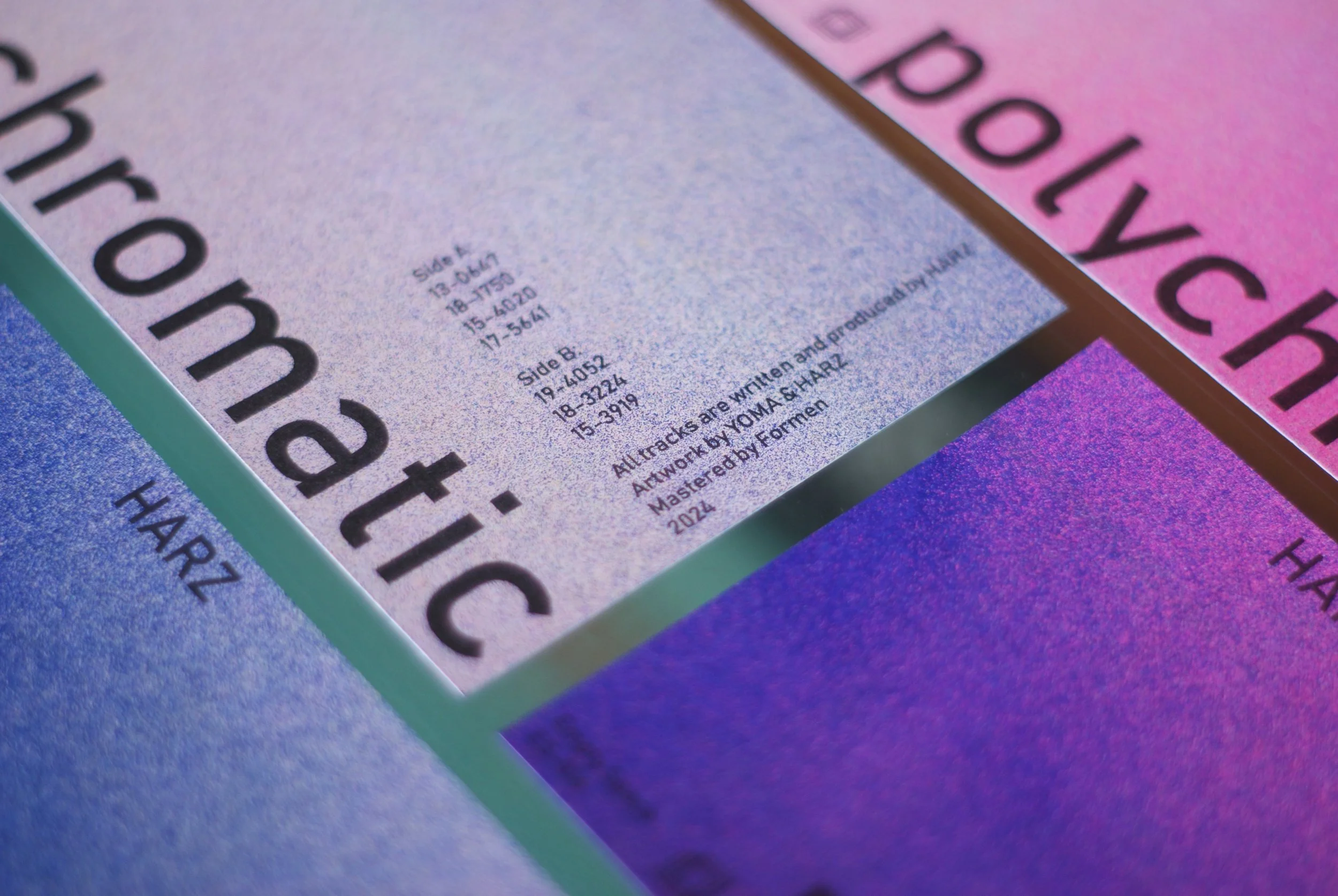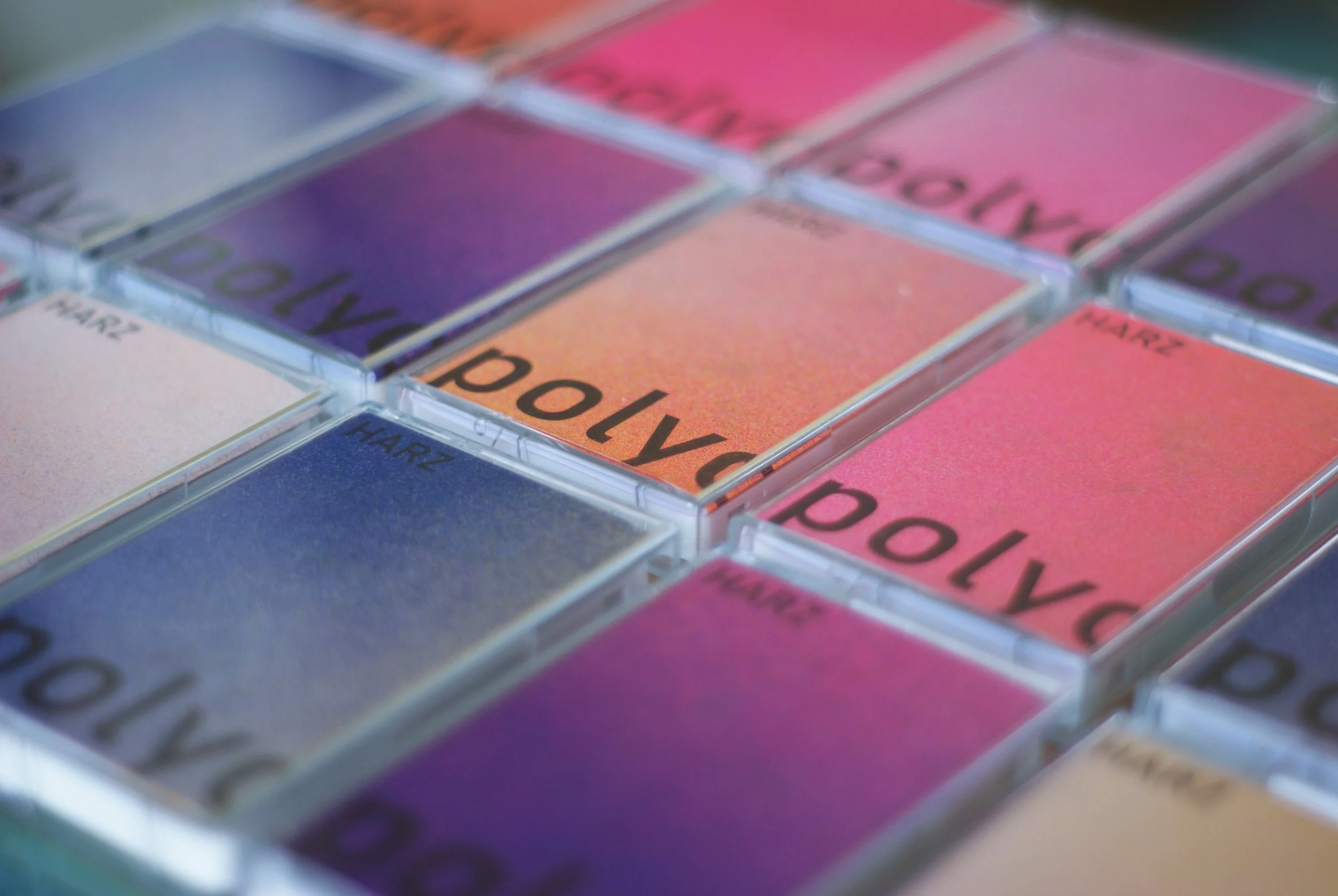
HARZ - polychromatic
2024 | ES-016 | Edition of 200 (cassette)
After three years of silence, HARZ returns with "polychromatic", his long-awaited second album.
Once again, the experimental sampling wizard from Empty Space delves deep into the aesthetics of early clicks and cuts, employing his signature technique of microsampling. While polychromatic retains the sound signature of his debut, it marks a clear evolution—offering a more elaborate and emotionally nuanced listening experience. Each track is thoughtfully curated, shifting in mood and texture, while maintaining HARZ’s distinctive looping, ever-evolving structures.
On polychromatic, HARZ not only embraces the degrading textures and inherent bit reduction of microsampling, but pushes further into the sonic possibilities of his vintage tape machines—particularly exploring the saturation and distortion that occur when they’re cross-fed into themselves. This interplay between digital decay and analog warmth lends the album a unique character in terms of timbre. It’s this deep focus on "Klangfarben"—the "colors of sound"—that creates the album’s signature tension and textural depth. The result is a minimalistic, yet dreamy, eerie, and psychedelic journey through sound.
As before, HARZ builds his tracks around his trusted old-school sampler, manipulating fragments of field recordings, vinyl artifacts, and acoustic instruments until they’re transformed beyond recognition. These sonic elements are then reassembled into mesmerizing, highly saturated landscapes. The mixing console acts as his compositional tool of choice—every track from the sampler and drum machine is routed through it, allowing HARZ to sculpt his soundscapes live in real time using analog EQs, vintage effects pedals, and his faithful tape machines. All seven tracks on polychromatic were recorded live in single takes, with no overdubs—what you hear is how it was performed.
For the visual identity of the tape-release, we teamed up with YOMA from Biel/Bienne, whose design mirrors the album’s aesthetic philosophy. Created using a sample-and-hold process, the artwork was realized as a four-layer RISO print. YOMA generated three randomized, noise-influenced patterns, each assigned a specific color. During printing, every one of the 200 cassette covers was individually shifted and rotated, resulting in unique gradients and ever-changing visual compositions—united by concept, yet singular in form. The fourth layer, featuring the typesetting, was designed by HARZ himself.
Mastering was entrusted to longtime friend Formen, who gave the album its final polish. Tape duplication was handled by T.A.P.E. MUZIK in Leipzig, ensuring pristine analog sound quality.










